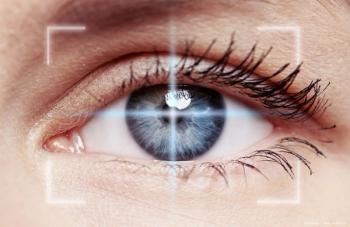
Addressing common thermal pulsation questions
Editor’s Note: Welcome to “
It is ideal for ophthalmologists to treat early in the progression of meibomian gland dysfunction (MGD) in order to preserve stressed-but-still-working meibomian glands.
But what if a patient presents with advanced gland atrophy or dropout? Is it still worth trying to treat with thermal pulsation therapy?
This is a question I am often asked by colleagues.
Previously in the "Let's Chat" series:
In my clinical experience, I have found that it is still worth treating if there are even just a few functioning meibomian glands remaining. The treatment may be able to help maintain the function of those glands or even restore more glands to functioning status.
It was previously thought that gland atrophy is permanent, but Alice Epitropoulos, MD, and Arjun Hura, MD, recently presented a new way to evaluate meibomian glands using dynamic meibomian imaging.1
With this more sensitive measure of the gland structure, they demonstrated that treatment may improve gland structure in patients with atrophy.
Related:
Will thermal pulsation replace other therapies?
The short answer is “no.” In most cases, patients should remain on immunomodulation treatment and continue lid health and hygiene measures, such as nutritional supplements and warm compresses. (I prefer a heated moisture eye mask to wash warm cloths.) These are often adjunctive and can help extend the efficacy of the thermal pulsation (LipiFlow) treatment.
And for patients with advanced disease, ophthalmologists may want to consider adding more treatments-not fewer-because the etiology of these cases is generally multifactorial.
For example, look at the facial skin. If there is evidence of rosacea, I have found it helpful to bring the patient back after thermal pulsation therapy for intense pulsed laser (IPL) treatment because it can work synergistically with this therapy.
Also by Dr. Matossian:
For those with severe blepharitis, I like to conduct microblepharoexfoliation (MBE) (BlephEx) just before thermal pulsation in order to remove the external biofilm prior to heating and extracting the meibum.
What burning questions do you have about thermal pulsation therapy and other treatments for MGD?
References:
1. Hura A, Epitropoulos A, Czyz C, et al. The potential effect of LipiFlow on meibomian gland structure: A preliminary analysis utilizing dynamic meibomian imaging. ARVO Poster 935-B0113, 2018.
Newsletter
Don’t miss out—get Ophthalmology Times updates on the latest clinical advancements and expert interviews, straight to your inbox.
















































.png)


